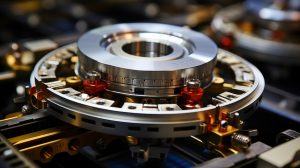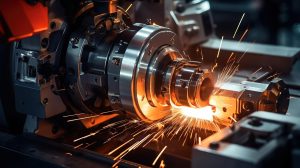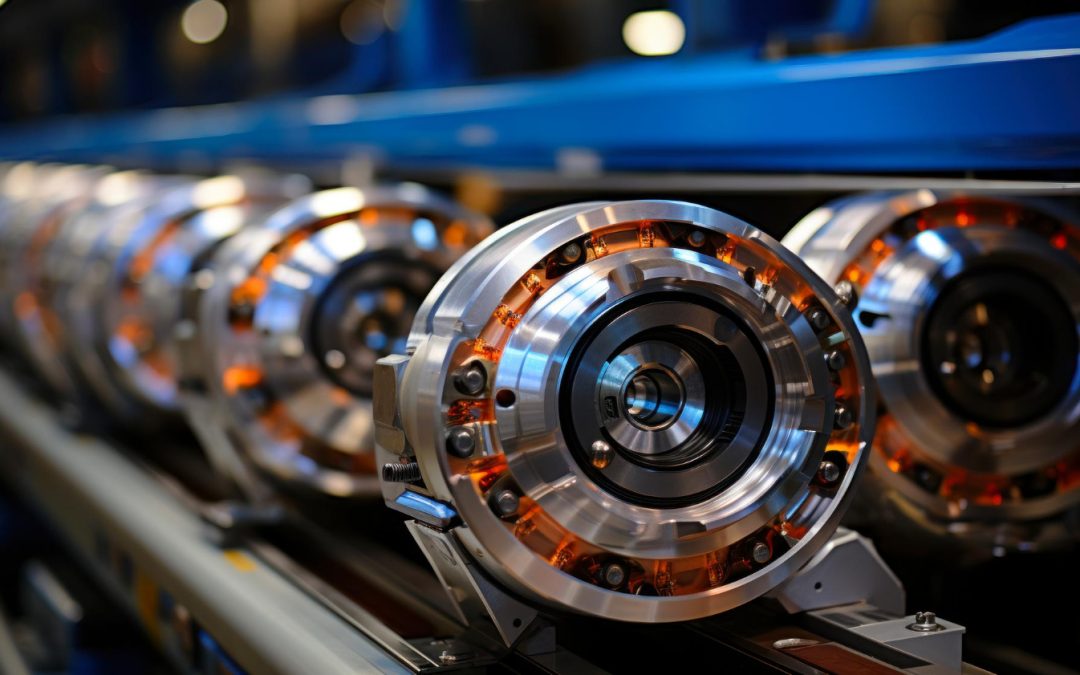Industrial motors are the pulses of automation, providing the power to machines which enable various manufacturing processes. Motors in industrial automation turn electricity into motion, and such motions are utilized in very different kinds of robotic devices – from vacuum cleaners to complex business robotic arms. There are several types of motors used in industrial automation, but the advantages and properties of them are different.
Types of Motors in Industrial Automation
Many types of motors are used in industrial automation for different purposes. Let’s check them out!
DC Motors
DC motors are powered by direct current, and the characteristic feature is their simplicity and smoothness control of the speed. Such applications are the mimicking of the natural daily motions that are required for such purposes. Here are some key points about DC motors:
Applications: Apart from being used in applications like conveyor belts, packing, and material handling, it is also used in circulation, transportation, packaging, and processing of goods.
Benefits: Simple design, direct handling, excellent low speed performance, and great high torque.
Drawbacks: Surface deterioration is direct and coarse because of the brushes and commutator which frequently requires repair works.

Checkout: Key Difference Between Industrial Automation and Robotics
AC Motors
Consequently, single phase AC motors are preferred today because of their smooth performance, precise control functions and dependability on industrial operations. They provide such functions as schematic representation and can be applied for high-power and constant-speed applications.
Applications: Pumps, fans, blowers and conveyor belting among the other.
Benefits: Can efficiently function, last long and even don’t produce noise.
Drawbacks: DC motors can better apply to speed control tasks than induction motors due to this minor difference.
Servo Motors
Servo motors in industrial automation are high-performance motors that provide good control over position, speed, and acceleration. They are the drivers of a self-regulated system based on the wayback effect.
Applications: Automation software, CNC equipment, and robotics to name a few.
Benefits: High precision, instantaneously, and essential in complex operations with accurate control such as cutting, drilling and welding tasks.
Drawbacks: Because of the high degree of quality and control of their systems, therefore, expensive.
Stepper Motors
Stepper motors move in separate steps, permitting for exact control otherwise impractical to be done without any feedback mechanisms. They are quite simpler, cheaper and as effective as servo motors.
Applications: Any kind of printer working in 3D, medical devices, and technology that requires precise positioning are some examples.
Benefits: Selective action, basic structure, and effortless connectivity are the key advantages.
Drawbacks: Failing in its duty to read the program correctly may lead to misinterpretation, and most of them are hard to handle without very good maintenance.
Brushless Motors
Brushless motors take the advantage of higher efficiency and better performance in the long run due to their increased efficiency and reliability. In contrast to brushed motors they have electronic controllers which add further complication and control to the external electric motor.
Applications: Drones, conveyor belts, central heating and cooling systems, and electric vehicles are all examples of the machines we have now to reduce harmful emissions and pollution.
Benefits: Good performance and up-time and small maintenance and longer life.
Drawbacks: Increase in initial cost of the duel fuel gas boiler systems with the electronic controllers.

Industry Data and Insights
According to industrial experts, such choice of motors in industrial automation can have a huge impact on the operations and production of industries. Warren Osak, CEO, Electromet Inc., noted that motors play a major role in the execution of tasks when consistency and efficiency are central factors, for example, those requiring assembly and packaging.
He pointed to even greater benefits of high efficiency motors in the power supply system, saying that these motors can save up to 30% energy resulting in huge revenue reduction in profits and costs.
According to Mike Allen, the Organisation Development Chairman of Automation Controls Group, application information must determine which motors will be used. Moreover, the servo motors for example are ideal for such kind of application that need high multi-axis precision, such as robot arms.
As opposed to that, stepper motors in industrial automation are relative to this percentage cheaper if more straightforward movement control is paramount.
Conclusion
However, the most important aspect for industrial automation is to select a proper one for efficient performance, energy efficiency, and reliability.
Irrespective of the complexity of the DC motor or the dependability of AC motor, the high-end accuracy and advancement of the precision that the servo motors offer, the sustained torque/optimized performance of steppers and the high power density and efficiency of brushless motors, every types of motors are developed separately and suitable for particular industrial requirements.
Understanding and mastering these types of motors in industrial automation will help manufacturers design and build the most efficient systems, resulting in improved productivity and quality.
